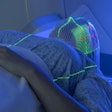A survey of almost 1,000 adults who received treatment as young children for neuroblastoma between 1970 and 1986 and survived their illness revealed that 41.1% had experienced one or more chronic health conditions later in life.
The study, published in the August 19 issue of the Journal of the National Cancer Institute (2009, Vol. 101:16, pp. 1131-1139), represents the largest comprehensive investigation of long-term neuroblastoma patients conducted to date and is based on 20 years incidence of follow-up.
Neuroblastoma is the most common extracranial solid tumor affecting children, with 40% of patients diagnosed younger than 3 months old. The odds of surviving are steadily increasing, with respect to both short-term and long-term outcomes.
Neuroblastoma patients account for 6.7% of pediatric cancer patients being followed in the Childhood Cancer Survivor Study, more than half of whom were diagnosed younger than 12 months of age. For the current study, a multi-institutional research team headed by Dr. Caroline Lavadière, a radiation oncologist at Sainte-Justine Hospital in Montreal, surveyed 954 (69.4%) of this cohort.
When compared with siblings, neuroblastoma patients had an 8.3-fold higher risk of developing a chronic health condition that was primarily musculoskeletal, neurological, endocrine, or sensory in nature. The children who were treated with multimodality therapy (surgery with chemotherapy, radiation therapy, or both) were more than twice as likely to develop a chronic health condition as survivors who were treated with surgery alone.
Neuroblastoma patients had a cumulative incidence of a second malignant neoplasm of 3.5% at 25 years and 7.0% at 30 years, with the risk being associated with exposure to radiation therapy, according to the research team. The most common second malignant neoplasms were thyroid cancer, breast cancer, and acute myeloid leukemia.
The 25-year cumulative risk of late mortality among all 1,375 neuroblastoma patients included in the Childhood Cancer Survivor Study was 6%. The leading causes of death were disease recurrence (51%), second malignant neoplasms (15.4%), and pulmonary/cardiac complications (8.3%).
Neuroblastoma survivors need to be monitored closely because of the high level of multiple health risks they face, the researchers emphasized.
Related Reading
Second cancer risk in childhood cancer survivors increased lifelong, June 9, 2009
Passport for Care aids follow-up of childhood cancer survivors, April 13, 2009
Childhood cancer survivors have increased risk of developing new malignancies, December 31, 2007
Copyright © 2009 AuntMinnie.com



















